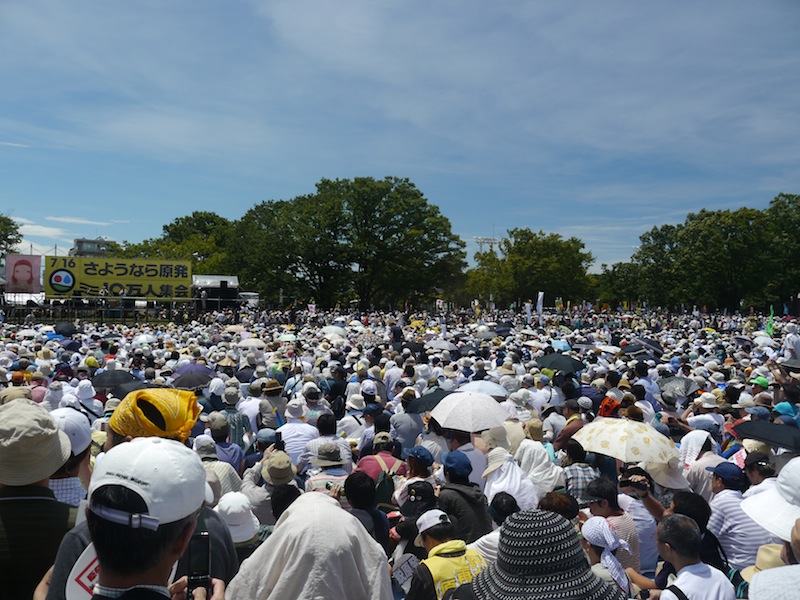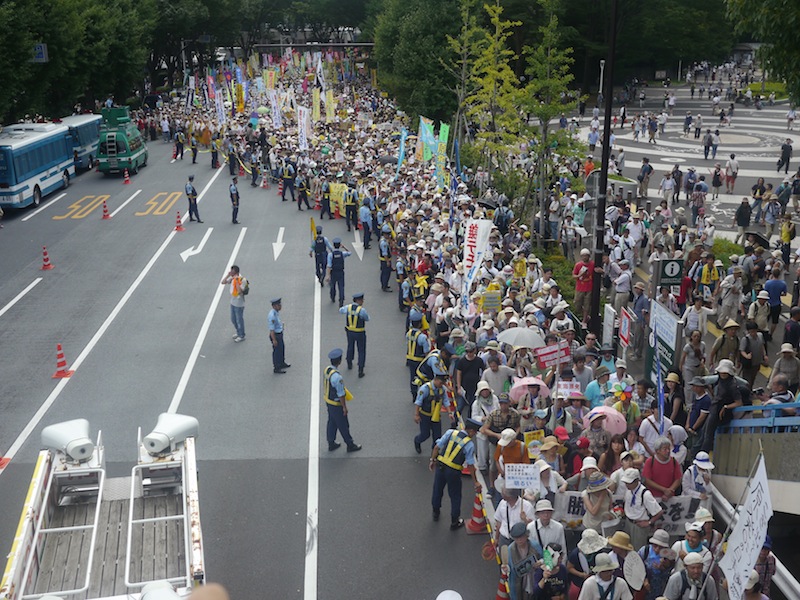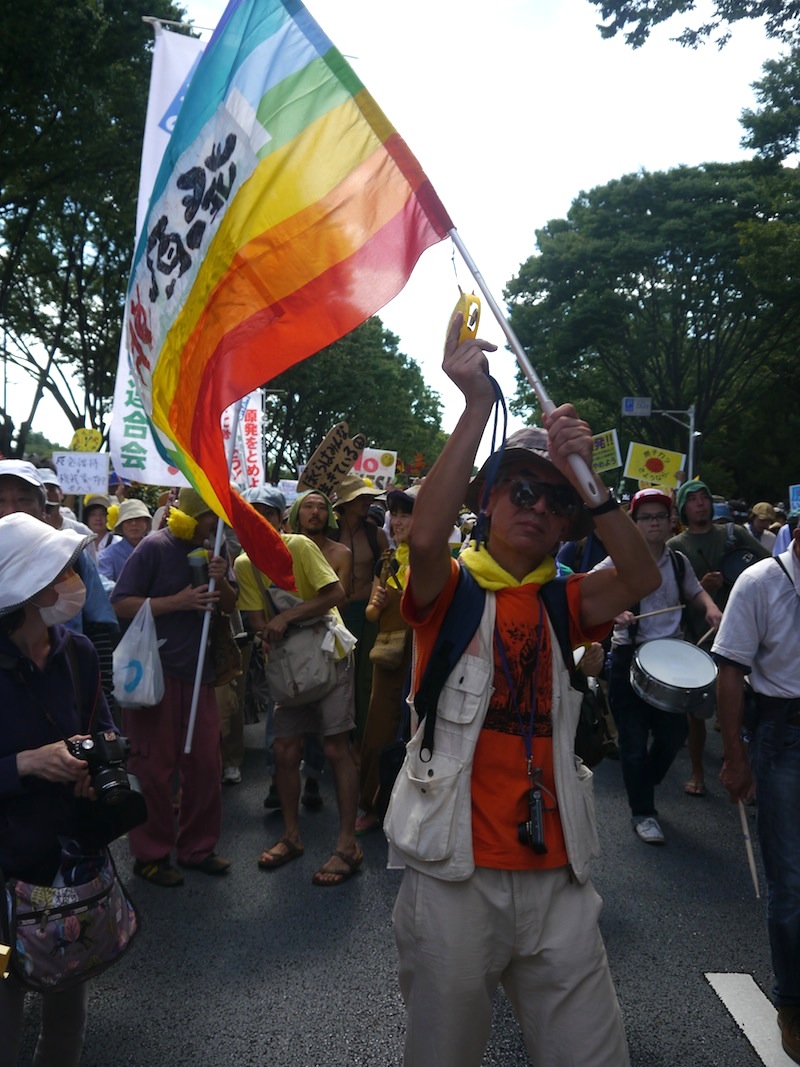Large protest against nuclear power
TOKYO DEMONSTRATION DRAWS MORE THAN 170,000 (OR WAS IT ONLY 75,000? )
Public protests were not uncommon in Japan before the March 11 Earthquake, but never have they reached the scale of this year's anti-nuclear protests.
After the Fukushima Daiichi power plant was damaged due to the earthquake and the tsunami, peoples' doubts grew about the safety of nuclear power plants nationwide.
Before the accident, people believed nuclear energy was safe. After March 11, 2011, people began to doubt this safety and became more worried about possible nuclear accidents in the future. All of Japan's nuclear power plants were shut down for safety checks of the reactors. Citizens and companies were called upon to save energy, or Japan might suffer from shortages of electricity and would have to rely upon fossil energy sources.
Protesters shout out: don't restart the reactors! Although the opposition against nuclear power grew both locally and in Tokyo, Yoshihiko Noda ordered the restart of two Oi nuclear plants.
The organizers of Monday's demonstration estimated that more than 170,000 people came to protest against resuming nuclear power operation. (Police estimated the crowd at 75,000)
Various environmental and citizen groups joined the protest, and notable celebrities such as composer Ryuichi Sakamoto and Nobel Prize-winning novelist Kenzaburo Oe appeared in front of the crowd.
The protest near Yoyogi Park was the biggest. There were some colorful protesters, but the majority were ordinary-looking people who are concerned about Japan's future - parents, children and elderly people.
Bands and speakers performed on three stages before the protesters headed out to Omotesando street, where police crammed the protesters onto just one of Omotesando's six lanes.This is not uncommon for demonstrations and small festivals in Japan, but the anti-nuclear protests are clearly on a different scale. For the Super Yosakoi, a dance festival which was held on the very same road, three lanes were reserved for the performers.
Regular protests continue near the residence of the Prime Minister on Friday, with protesters calling for a human chain around the National Diet on July 29. People will assemble at Hibiya Park at 15:30 and will light candles in the evening. Information is available in English at the "Metropolitan Coalition against Nukes" website.
Prime Minister Noda has promised to reduce Japan's dependence on nuclear energy but failed to create a binding exit scenario. He faces opposition from powerful energy company lobby groups with their ties to the media and Japanese politcal parties. 9000km away, a clear goal for leaving nuclear energy exists - ironically it was the Fukushima accident which swayed public opinion in Germany and caused the conservative-liberal coalition to return to the social-democrats and the Green party's previous plan. However, even when all the nuclear reactors are switched off, nuclear waste will be a reminder of the atomic age for thousands of years to come.
Text revised by Maiyim Barron & Sarah Fukui



